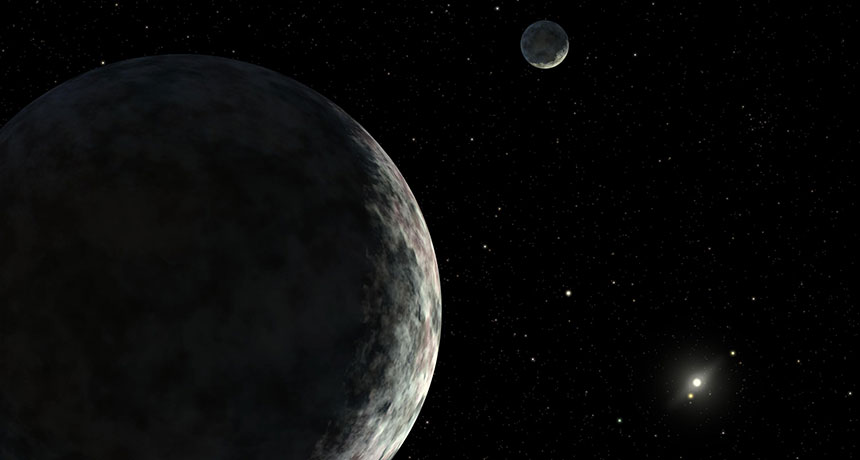Way-out world is solar system’s most distant object — for now
Dwarf planet is about 103 times farther from the sun than Earth

FAR OUT The newly discovered V774104 is the most distant object in the solar system and beats the previous record holders, the dwarf planet Eris and its moon Dysnomia (illustrated).
JPL-Caltech/NASA







